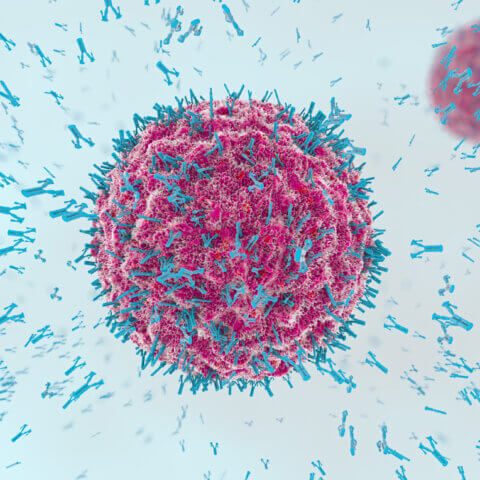Last Updated: October 8, 2024, 4 pm UTC
Gene therapy clinical trials are logistically complex studies that require highly qualified sites and engaged patients for success. The ability to select the right sites and patients can be the difference between product failure and market approval.
In this final part of a three-part blog series on gene therapy development, we provide tips on operationalizing gene therapy studies to optimize site selection and patient recruitment and engagement.
Site selection
Gene therapies are resource-intensive and require sites with the capability and capacity to keep development moving forward.
1. Define criteria for ideal sites
In rare disease studies, it is critical to partner with sites that have key opinion leaders, rapid start-up timelines, and existing, expansive patient networks. Other ideal site criteria include institutional accreditation for gene therapies, experience with genetically modified organisms (GMOs), minimal GMO regulatory barriers, and access to any specialized facilities that might be needed. These facilities may include one for preparation and administration of the investigative medicinal product (IMP) according to standard operating procedures (SOPs), intensive care or bone marrow transplant units, surgical capabilities, genetic testing, and specialized imaging. In addition, GMO experience and corresponding SOPs are essential as IMP receipt and storage, preparation and administration, transport, containment, and destruction or return must all be performed in accordance with applicable requirements.
Generally, investigators with experience with the rare disease of interest are already part of a larger institution with a database of known patients and a network of specialty capabilities. Still, most studies will need to utilize multiple sites to meet overall study enrollment criteria. If different aspects of the protocol need to be completed at different locations, it is important to coordinate patient assessments to be feasible and not unduly burdensome.
For studies with complex dosing regimens, endpoints, or equipment requirements, it is advisable to consolidate expertise to the greatest extent possible and refer patients to a centralized site. While this approach is ideal for optimizing study efficiency, it may not always be practical. A hub and spoke model, where IMP administration occurs at the enrolling site and post-dosing follow-up occurs at referral sites, can be used to expand patient access to reach enrollment goals.
Knowing that the clinical trial landscape for gene therapy studies has become increasingly competitive, sponsors may also want to qualify sites based on the existence and impact of competing trials at that location. It may also be useful to consider the feasibility of converting sites into commercial treatment centers after product approval.
2. Consider requirements for cross-border enrollment
Cross-border enrollment is common in rare diseases, given these small patient populations’ geographic dispersion and distribution. For studies with cross-border enrollment, the primary consideration is submission requirements. Typically, the institutional review board and ethics committee of the site will need to be informed of where patients will be traveling to or from.
Insurance may also be required for cross-border enrollment, not just for the patient but also for any caregivers traveling with the patient. Medical records are another key consideration. Sponsors and sites must understand and comply with data protection legislation, which may differ between the patient’s country of residence and the cross-border site.
Travel support is always critical for rare disease studies. Travel support is more complicated than simply booking a flight and hotel when applied to gene therapy studies. Patients and their families may require passports or visas or may require special accommodations for stays that may last several months, which can impact study timelines and costs. Ensuring that travel and out-of-pocket expenses are included in the study budget eases the burden on patients and their families and improves the overall clinical trial experience.
Patient enrollment and engagement
3. Develop site-specific recruitment plans
Gene therapies differ from traditional pharmaceuticals in that these products have limited time windows for manufacturing and administration. As a result, cohort availability is less flexible, and IMP administration is highly coordinated, so both patients and sites must understand the limitations and expectations of the study. Developing site-specific recruitment plans can help manage expectations and support site enrollment.
4. Consider the needs of patients and their families
The idea of gene therapy may conjure a mix of emotions among patients and families. Some may be hoping for a magical cure, while others may be fearful of being genetically modified. They may have preconceptions or been exposed to misinformation about gene therapy. Consequently, sponsors and sites need to emphasize education, informed consent, and the commitment level required for study participation. For successful recruitment, it is essential to consider the needs and expectations of both the patient and their family. Effort should be invested in reducing family burden and balancing scientific rigor with the least taxing or invasive method of gathering meaningful data. In some cases, relocating the family unit to live near the site for the first six months, or through the phase of the study with critical endpoints and safety evaluations, may be warranted.
5. Anticipate life changes that may impact long-term follow-up
Long-term follow-up is a core safety requirement for gene therapy products and may last up to 15 years. Sponsors should consider that, over this lengthy period, study participants will experience significant changes in their lives. Moreover, many gene therapy products are being studied in pediatric populations. As these children grow up, they may transition to new healthcare providers and may prefer different methods for staying engaged with a study. Thus, to optimize patient engagement, it is critical to be as flexible as possible and to communicate with participants on a regular basis, so they are reminded of the broader impact of their participation on future patients and the body of scientific knowledge.
At Premier, we have conducted more than 60 cell and gene therapy studies in the past five years, leveraging significant experience in viral vectors and deep therapeutic expertise in oncology, rare disease, and pediatric research. Click here to learn more about how Premier can help move gene therapy research forward.

 Webinar
Webinar 


 Perspectives Blog
Perspectives Blog 